Have you ever found yourself overwhelmed listening to golfers discussing the game?
You’re not alone!
Golf has its own culture and way of communicating, which can be a challenge. Worry not – you don’t need years of experience to comprehend what’s happening.
Even long-time players can learn new terms to describe the course and the game. While fairway is very familiar to most people, only some know what apron implies in golf.
Wondering what all of them stand for?
Knowing these terms is not something that will make you sound intelligent. It is about enhancing your gameplay and understanding the layout of the field better. Let’s go beyond the typical terminologies associated with golfing!
As an experienced golfer, I thought it might be helpful to bring you some of the more common Golf course terminology, irrespective of your skill level.
Widely Used/Famous Terms
These terms are fundamental, and each golfer should know them. They are the fundamentals of golfing terminology, that a player is most likely to encounter on the field.
Here it is!
1. Fairway
The fairway is the golfer’s most recognized on the course. The fairway is a delicately trimmed stretch of grass between the tee and the green.
The fairways are normally broader than the other parts and are meant to provide a good lie for the following shot if a player hits a good tee shot.
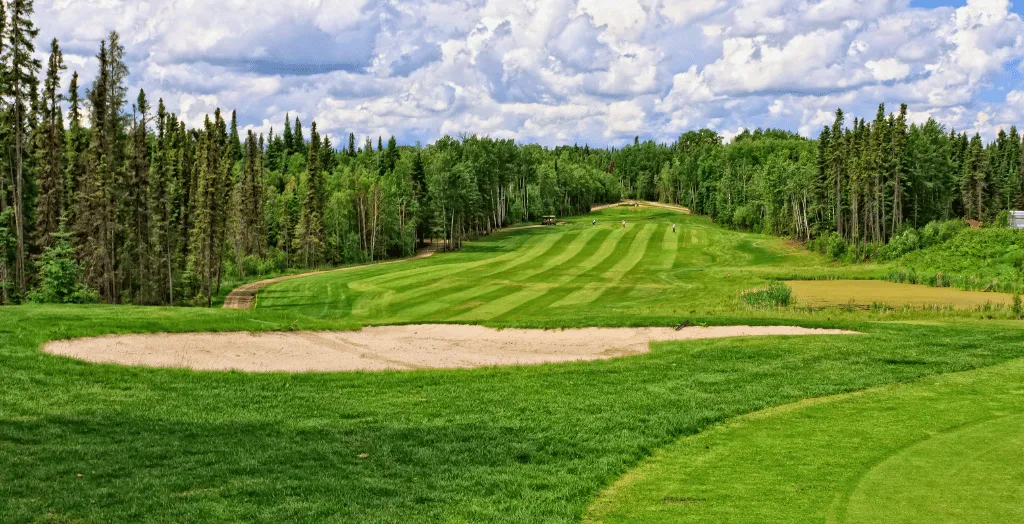
The surface here is quite short, and once on this part of the green, the ball will sit up nicely for a good strike. The fairways are often slightly wavy, which can influence ball roll or the choice of a shot.
One of the fundamentals of golf is always driving the ball to the fairway because doing so makes for easier approaches and reduces the incidence.
2. Green
The green, also referred to as “putting green” is the core focal area of any golf course. It is the small and well-groomed area adjacent to the hole with the least amount of grass.
Greens are meant to roll the ball with great ease but at the same time, they are far from being plain. They sometimes have slight inclines or declines that require a golfer to think and carefully putt.
The green as the playing surface can be very slow or relatively faster. This aspect is determined by the ball’s speed when put.
Learning how to putt various types of greens is perhaps the most important skill, especially in reducing the total scores, in golf.
3. Tee/Tee Box
The tee is the point from which a hole starts. It is the initial stage of every shot that is formed on a golf course. It is an area that is usually a little raised, and golfers place their ball on a small peg known as a tee before taking the initial shot.
Tee boxes are positioned to provide the player with a range of places from which to tee off. They are indicated by colored stakes, which can be moved to alter the playing complexity of the hole.
The area around the tee markers is carefully maintained to provide a level stance. Selecting an appropriate tee box at the beginning of the game is crucial to maximize fun and minimize the time.
The first stroke of the game from the tee is called the drive, which provides the direction and format of the whole hole.
4. Bunker (Sand Trap)
Bunkers, also known as sand traps, have proven to be a nightmare for most course players. These hazards are depressions filled with sand, strategically placed around the course to catch errant shots and add challenge to the game.
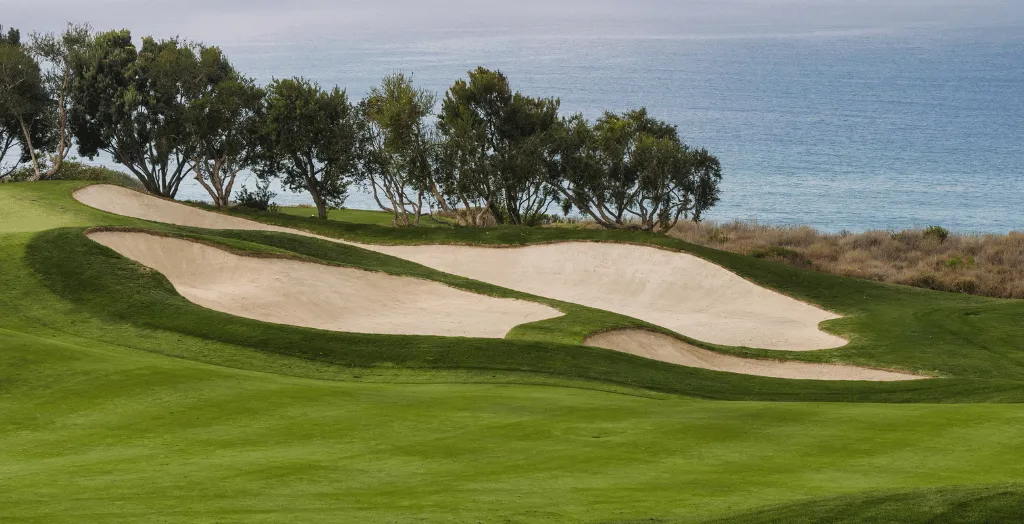
Shots from this position are very tricky and should usually be made with a special club called a sand wedge. The texture and depth of the sand may have changed how the ball behaved and how the hole should be played.
Though greatly feared by numerous golfers, learning how to get out of bunkers is essential to golf.
5. Rough
The rough is exactly a part of nature that punishes bad shots in golf. It is defined as the regions of longer grass adjacent to the fairway and encircle the green. The rough can range from a light surface, slightly heavier than the fairway, and can hide a ball completely.
Shots from the rough are usually hit with more force and differ from those from the fairway. This is because the rough limits the club head into contact with the ball, thus altering its trajectory.
The roughness’s degree usually worsens as one moves away from the fairway. In strategic course management, one has to balance the risk of going for tight fairways against the possibility of finding one in a punishing rough.
Moderately Known Terms
Most golfing enthusiasts may know some of these terms but are new to most novices. Knowledge of them can help develop the course strategy and actual golfing experience. Here it is!
1. Dogleg
A dogleg is a hole that doesn’t play straight from tee to green. Instead, it bends left or right, like a dog’s leg. These holes add strategy to the game, challenging players to decide between a safe shot or a risky one to cut the corner.
A dogleg left bends to the left, favoring players who can curve the ball right-to-left (a draw for right-handed golfers). A dogleg right does the opposite. Bunkers, trees, or other hazards usually mark the turn in a dogleg.
Longer hitters can try to cut over these obstacles for a shorter approach. While others play it safe along the fairway’s curve. Doglegs test a golfer’s course management skills and ability to shape shots.
2. Divot
A divot is a piece of soil that a golfer removes from the ground when he swings an iron. It is a small round object of grass and soil raised when the club strikes down and through the ball.
Taking a divot is usually a good sign of a proper iron shot. It implies that the player is striking down on the ball.
Following the hit, players must refill the divot made by their club or fill it with sand and seeds. This ensures that the fairway is preserved for the other players when arriving at the ground.
On the practice range, you have noticed rows of marks in the grass resulting from golfers chipping. Swing fundamentals like taking the proper divot are part of mastering iron shots in golf.
Less Common Terms
Although these terms are not as frequently mentioned during a round. Knowing them will enhance one’s comprehension of the game and be more effective in handling intricate course scenarios. Here it is!
1. Apron
Apron, also known as a collar, is the region around the green cut short to almost close-mown. This one is somewhat longer than the green and shorter than the fairway hence it serves as a transition area.
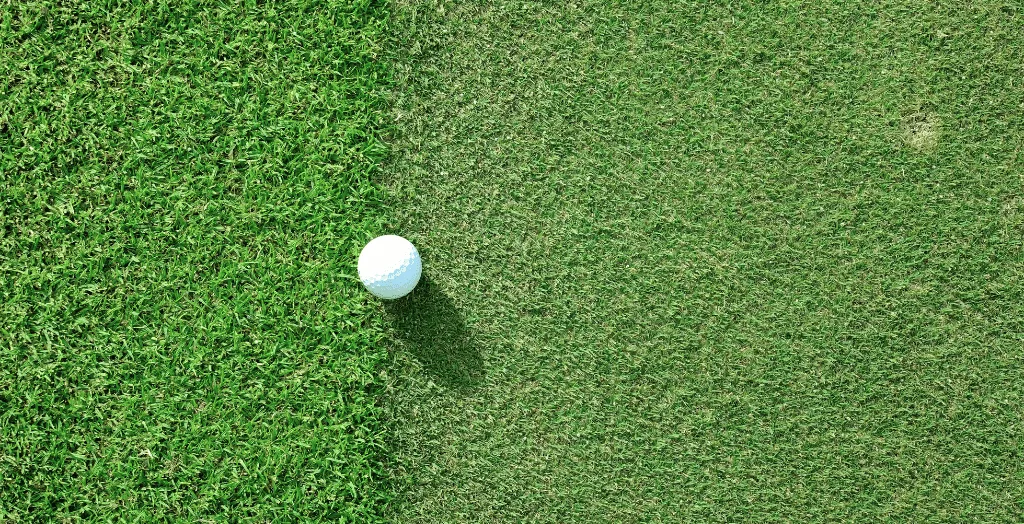
If a shot falls on the apron, it can be knocked in with the putter or a wedge based on the circumstances.
Experienced, even purposely trying to chip the ball past the green to rest on the apron to pocket it easily. Grass on the apron tends to be cut in the same direction as the green, influencing the ball roll.
2. Flagstick
Flagstick, or pin, refers to the thin, vertical spike with a flag placed on the green that signifies the position of the hole. It assists the players in estimating the wind’s direction and aiming the shots from a perceived distance.
Changes in the recent rules enable the players to put the flagstick in the hole. Some golfers like to keep it in for their long putts so that they can use it as a guide or a backstop.
Players use the position of the flagstick to determine where on the green it was placed early in the day, to plan their shot.
3. Fringe
The fringe is a narrow area of grass located between the green and the rough or fairway. It is mown slightly higher than the green but lower than the fairway.
Shots that fall on the fringe can be played with a putter, Wedge, or even a Hybrid club, depending on the player’s condition and the distance to the green.
The fringe is typically made of a material different from green and is generally textured or grainy in some way, which influences ball roll. Fringe is a good area for skilled players to aim at as it allows them to slow down their pace on fast greens.
4. Lateral Hazard
A lateral hazard is most often a water hazard found to the side of or close to the intended line of aim, signposted by red stakes or lines. More specifically, they have a less restricted and more versatile relief opportunity compared to an ordinary water hazard.
A player can take a stance within two club-lengths behind the hazard line, but not nearer the hole. Lateral hazards bring more excitement into a hole since the players can consider whether to go over a hazard or to go around it.
5. Drop Zone
A drop zone is a specific golf course area where players are allowed to drop their balls after a stroke has landed in a hazard rather than seeking other relief measures. It is applied at holes containing water barriers or any other complications a player may face.
Holding zones are utilized to allow for quicker play and to give a favorable opportunity for players of a lower level. They are most often painted with a line or a sign. Laying up usually results in a one-stroke penalty, but pays off if a player might otherwise fail to avoid the hazard.
6. Hazard
A hazard is anything that is created on a golf course to put golfers to the test or punish them for a bad shot. These involve water, sand, and sometimes, the thick rough desert as the target area.
Colored stakes or lines usually mark hazards: Yellow refers to water hazards, red shows lateral water hazards, and white for out-of-bound areas. Every type of hazard presents certain guidelines for what a player should do if his ball is in that location.
Proper positioning of threats increases the difficulty levels of courses and challenges players to weigh their risks.
7. Waste Bunker
A waste bunker is a large area of sand, which is not regarded as a formal hazard. Unlike other bunkers, a player can ground his club and take practice swings in waste bunkers without penalty.
They are typically on links-style or desert courses and are usually built to accommodate large assemblies or gatherings.
Waste bunkers are often less artificial and smooth than sand traps that are terrifically raked and groomed. They can stretch over a considerable hole, affecting the choice of a strategy and a shot.
Shots from a waste bunker are often tricky to make because of the ground and sand that may be uneven.
8. First Tee
The tee is the start of any round of golf. This is usually situated near the clubhouse and may have a bigger tee box to allow starting groups to do so. Most players are generally nervous on the first tee because the first shot is played in the round.
Teeing ground may also contain a scorecard box, course information, or a starter’s cabin or hut, depending on the course’s design.
In tournaments, the first tee may have stands or designated seating for such as spectators and other officials. This is a common area where people meet before the games to greet and plan their game strategies.
9. Nineteenth Hole
The nineteenth hole is a nickname for the clubhouse bar or the restaurant where golfers are likely to go and have food and drinks after the game.
It is not a real golf hole, but a social area where you can sit down and talk with other players, watch the game, and discuss what happened and who will pay for the lost bets.
The nineteenth hole is an essential tradition in golfing, which helps players come together. It’s where many golf-related tales are told (and sometimes stretching the truth slightly).
Most clubs have unique activities or even a drink traditionally served in the nineteenth hole.
It also serves as a location where other family members may accompany a player after a round of golf.

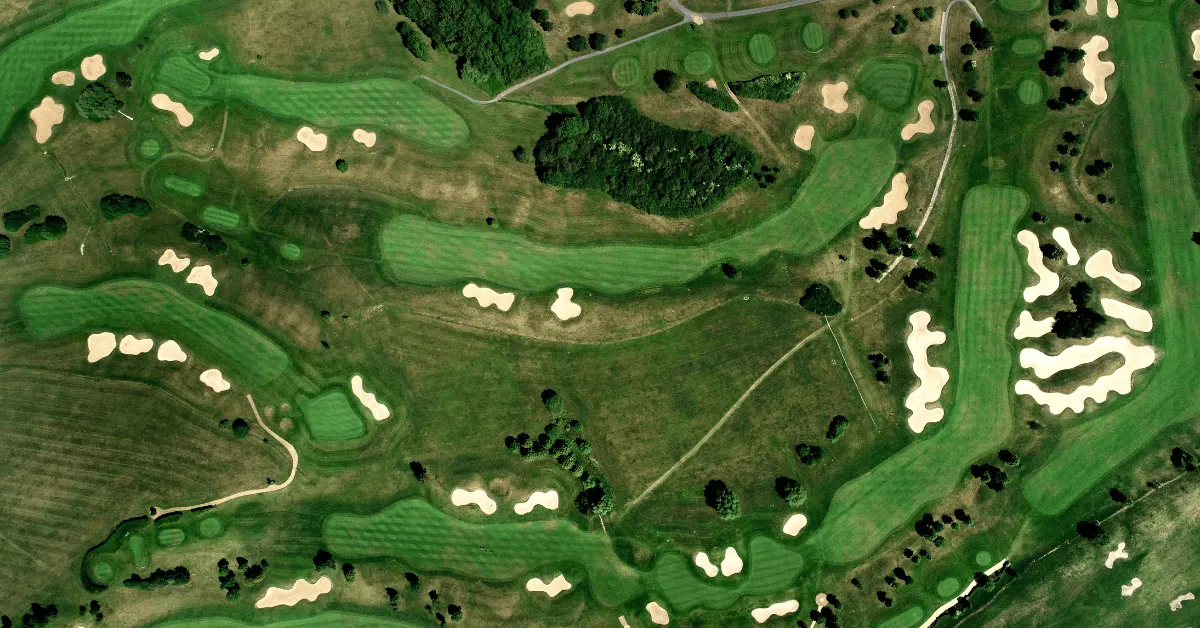


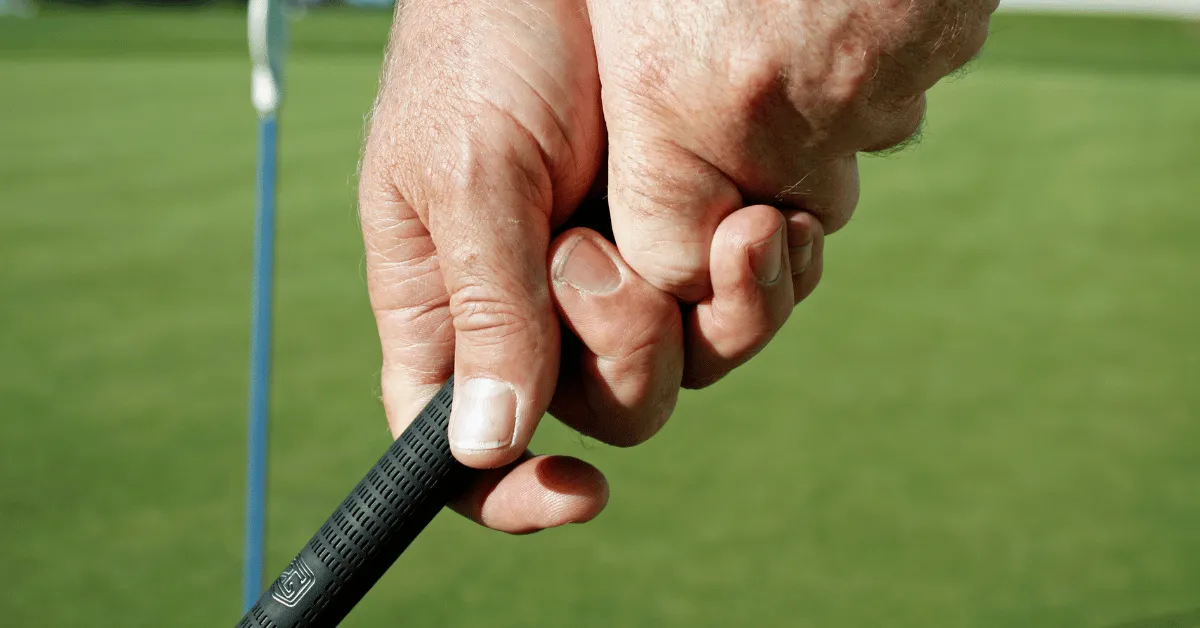
0 Comments